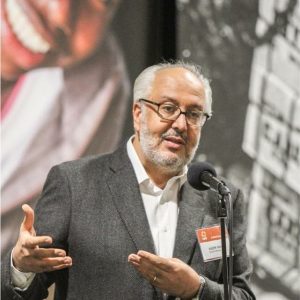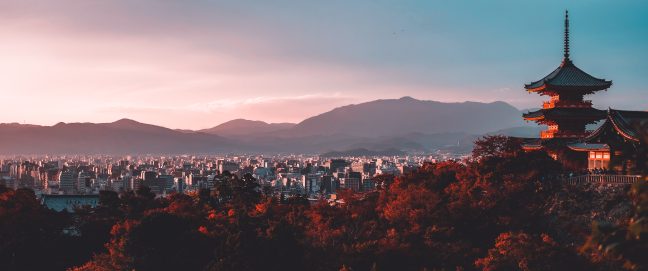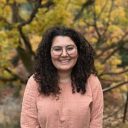In Egypt, philanthropy is becoming more independent and sustainable, while also more open to experimentation and learning. And nowhere is this better exemplified than in the recent change in status for CARE Egypt – previously a country branch and part of the network of the international NGO CARE USA that delivers emergency relief and supports long-term international development projects, CARE Egypt has now become an independent public foundation registered under Egyptian law.
This is a big change for the organisation and one which started over six years ago. Not only does CARE Egypt have more agency and independence, but its also able to now build on existing and legacy donor-funded models to further its market-oriented approaches in the agribusiness sector and micro businesses for women.
To understand more about this journey, as well as philanthropy in Egypt, I sat down with Dr Hazem Fahmy, the Director of CARE Egypt.
Elika Roohi: What’s the background to CARE Egypt becoming an independent public Foundation?
Hazem Fahmy: CARE has been working in Egypt since 1954. Since 2007 or so, we’ve been asked or encouraged to explore becoming an independent organisation which means becoming nationally registered under Egyptian law in preparation for qualifying to become a full member of CARE Confederation which, before we joined there were 14 members all around the world. At the time, we did not feel ready to do that. In 2011, there was the Arab Spring and there was a different vibe in the air, generally speaking. Two years after that, CARE itself issued a resolution committing the CARE International family to diversify its members, so that’s when we started to seriously rethink that position and coupled with increasing dialogue about the localisation of aid to Global South, it started to make more sense that we take such a step, and we were officially registered as an Egyptian organisation in 2018.
Some donors wonder why we’re asking for the amount of money we are. They say, ‘but you’re Egyptians.’ So what? … because you’re Egyptian, they expect you to be less expensive. That’s just nonsense to my mind.
So we have an independent Egyptian board, we follow the Egyptian and we are a completely independent entity from the CARE International family. Our actual portfolio of work at the time was $20,000 or something like that, symbolic and minimal, and in the spring, the portfolio will be somewhere between $7-8 million. Of course, we are inheriting the legacy of the country office, we’re getting support from the CARE Confederation, but we are also getting a lot of new partnerships from the Egyptian government, from the Egyptian private sector, from donors because many of them view this step as a very positive one towards localisation and building something that is more in tune with Egyptian needs.
What is the difference for your organisation in being independent rather than part of CARE International?
A lot of it is the same, and we wanted that because building on the legacy of the CARE country office is part of our credibility. What is different is the level of credibility with the government. We are being invited to different tables as a result of being an Egyptian organisation. Another is that we are now able to raise funds from the public, to have TV ads, billboards, face-to-face fundraising, email campaigns, etc. We haven’t started yet because this is going to be a big investment and a huge learning curve for us, but we will do so. Another difference, which I think is far more important, is that we’re able to initiate and operate social enterprises. As a foreign operator, we don’t have that luxury. For me, that’s not about money, but creating something that will have its own standing economically, which hopefully makes it more sustainable and makes us less dependent on any particular donor
Can you tell us a little bit about the programmes CARE Egypt has?
We have three programmes, each of which has a 15-year goal, so it’s very ambitious. One is women’s rights, the second is agriculture and natural resources and the third is education and youth citizenship. Each of those programmes has its own theory about what its impact group is facing, so they have a full analysis of what the problems are facing farmers for example, or facing women and they also have their own theory of how change should happen. At any given moment, any of those three programmes will have somewhere between four and six projects. We stopped thinking about linear development – if you give me $100, I do these activities, I get these results – because that won’t describe an outcome that may happen four years down the road, or at the end of a 15-year programme. A lot of ambiguity and a lot of other factors come into play when you think long-term like that and that’s why the learning is extremely important, because as you are implementing projects, you are refining and tweaking your theory because a lot of changes happen in that time.
Do you have a way to share your knowledge amongst CARE International and its affiliate members?
Part of our value proposition is that we can actually be part of advocacy on a regional level and as a result, we’re leading some of the global work on gender-based violence in emergencies; how to combat it, how to minimise its adverse effects. We have created a community of practice that’s a digital sharing of all the people that are working on emergency and gender-based violence and emergencies in the CARE world. The national directors of all the CARE members worldwide meet once a month to drive the global strategy, to decide on global advocacies, and depending on the size of the member, they will sometimes provide direct technical assistance to us as well. That’s done through the regional management unit. They don’t manage us because we are independent, but we consider ourselves still to be part of that community.
Has your change in status brought a different relationship to the local philanthropy infrastructure?
Not yet. We always had more of a partnership than a donor-contractual relationship with regional and international donors. That has not really changed. The bigger change will come in terms of our social enterprises where funders give us money with the intention that we’ll actually experiment and learn and build a social enterprise. That’s a model that I hope to replicate with others.
What investments did you have to make to reach this point of becoming an independent foundation with this model?
We’re trying to get donors to believe in our model so that they so they will fund similar experiments. But I’ll give you an example of something that we had to invest in ourselves because it’s very minuscule compared to what our real needs are. We have a textile workshop. We originally started it with a UN agency funded by the Egyptian government. When the initial project ended, because we were an international organisation, the government decided to take the assets and give them to an Egyptian organisation. But we’d also built up the know-how from the project which we wanted to capitalise on, so we asked our board to give us a small amount of money to buy machines again so that we didn’t stop the operation. But our main thing is we’re trying to find donors who believe in our model, in our transformation and who will give us the comfort zone of a grant to start these social enterprises which will eventually become independent.
Do you see those donors coming largely from the Arab region, or more internationally because of your networks?
Both. For example, I gave a presentation to our colleagues in CARE USA, and at the end, I said, ‘I want to be shameless, and I want you guys to help us. I only need a million dollars to start this microfinance institution and there would be no limit after that.’ We’ve also approached donors in Egypt. We got colleagues from CARE USA who are really good at establishing social enterprises and getting them to market who did a feasibility study of four or five ideas that we were thinking about. One of them they liked enough that they put in $150,000 or so to help us develop it.
What advice would you have for other organisations that are working to pursue a more financially viable model?
The biggest thing I need to say is that it’s only partly about a different financial model. It should mainly be about different ways of doing development. Financial independence is almost a by-product of that. Like I was telling you, we have a portfolio of about $7-8 million in grants. That’s our laboratory, where we create ideas and test things and we want to continue, but we hope that by 2030, we will have triple or quadruple that budget and that new money will come from a social enterprise. So it’s about the mind-shift of how development can be done and be sustainable, not about any financial gain. If I go to a farmer and say, ‘we need to save the environment, you need to behave and act differently. It will get you more yield, I will bring in the experts to teach you, I will buy you the small technological equipment that you need.’ Who will say no to that? But if I say to them ‘I have this great offer. It will mean more money in your pocket, it will be better for the environment, but I need you to pay a little bit to be able to get that service. That’s the ultimate test of the validity of the ideas that we want people to adopt. That’s why I say it’s not really about the money, it’s about acceptance of these ideas and these projects.
What were some of the challenges you faced in this process of transformation from an affiliate to a network to an independent foundation?
I think the biggest thing was reassuring our staff that we were not throwing the baby out with the bathwater. We want to build on our legacy. That doesn’t mean that we will fire everybody and hire new people, or that we will be operating at a different salary scale and the benefits will be different, or our culture of respect, participation and empowerment will change. The other thing is – and we still face that today – is that some donors wonder why we’re asking for the amount of money we are. They say, ‘but you’re Egyptians.’ So what? We’re talking about the level of credibility and of quality we’re providing, the kind of people I need to retain. It honestly pisses me off that, because you’re Egyptian, they expect you to be less expensive. That’s just nonsense to my mind. Of course, our government counterpart, and even some of the donors asked us why we were doing it. Is it really strategic or is it just about finding a new pot of money? It took a long time before enough people started to believe in what we’re doing, and then started to support such a move, both internally and externally.
I hope people see the different model for what it is, that the grantmaking mechanism can only be part of the equation rather than the entire ecosystem.
Another challenge that we faced and maybe this is in part advice to people who want to embark on a similar transformation – when we started to think and talk with CARE about this, they asked us what our business plan was, what our value proposition was, what the activities would be and so on. They were treating it almost like a project, and it got so much about the detail that it became prescriptive and that proved to be a nonsense because it’s really a journey. You cannot plan an entire five years of transformation. A lot of ambiguities arise. Eventually, we created a business model that became our primary document, our North Pole so to speak, compared to the earlier document, which is just a business plan that prescribed everything and which did not match the reality on the ground at all.
What do you think the transformation of CARE Egypt means for the philanthropy sector in Egypt in general?
I hope people see the different model for what it is, that the grantmaking mechanism can only be part of the equation rather than the entire ecosystem. That is probably the biggest thing. I hope, too, that we are also able to cement relations with the private sector in the region and even beyond so that they think of actually doing business with us differently, rather than looking on it as CSR which might be a photo opportunity. In a lot of the work we do with the private sector, we try to integrate ourselves into their business strategy, not their corporate social responsibility strategy, because I believe that what we do can affect how they do business in a sustainable way.
You mentioned earlier that one of your programmes is on agriculture and natural resources. Did your organisation contribute the COP in Egypt in any way?
A lot of our projects have an environmental lens. Beyond that, we’ve also worked with the Ministry of Social Solidarity and with the Ministry of Environment. CARE also has what’s called the Climate Justice Centre, which sends a delegation to COP every year and we are coordinating with these guys, so the delegation is going to be hosted by us. We have produced a policy paper for the Ministry of Social Solidarity on how we can encourage Egyptian civil society to be more environmentally aware and have better environmental practices, both at the level of their organisational footprint, but also in their own programming.
Elika Roohi is Digital Editor at Alliance magazine.








Comments (0)